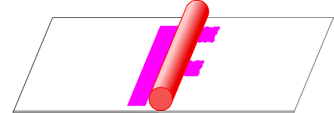Five Processes of Xerography
Printing

Let's take a look at the five printing processes by xerography, taking a simple document image as an example.
1.Charging
The entire photoreceptor is negatively charged by delivering negatively-charged ions using a wire with high-voltage.
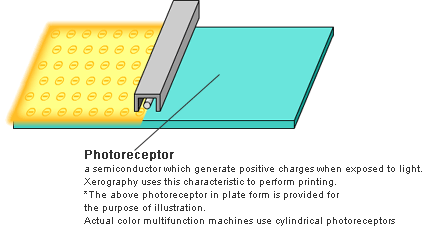
2.Exposure
A laser beam according to the image of the original document is irradiated onto the negatively-charged photoreceptor. The irradiated region of the photoreceptor generates positive charges, and negative charges were cancelled out.
A mirror image of the original document image provided by negative charges is formed on the photoreceptor.
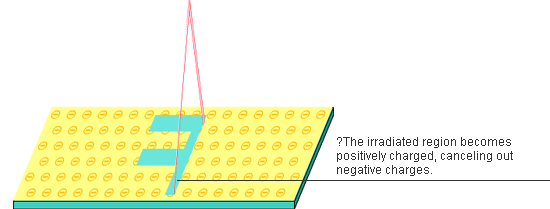
3.Development
Since toner immediately after transfer is just put on paper, it soon comes off.Accordingly, toner is fixed to prevent it from coming off by applying heat and pressure with a fixing roll to melt toner into paper.
In such a way, toner is permanently bonded on paper and copying is completed.
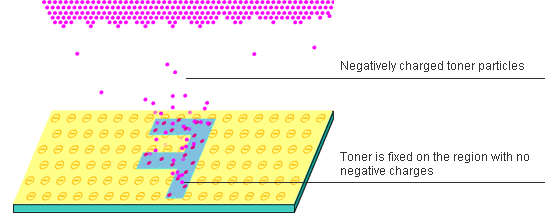
4.Transfer
Positively-charged paper is brought close to the photoreceptor. By using the characteristic that positive charges attract negative charges, negatively-charged toner is absorbed onto paper.
The image of the original document formed by toner is transferred onto paper.
- *Actual multifunction machines have a transfer roller to perform a transfer by exerting an electrical force from the backside of paper.
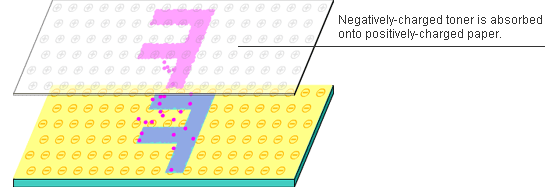
5.Fusing
Since toner immediately after transfer is just put on paper, it soon comes off.Accordingly, toner is fixed to prevent it from coming off by applying heat and pressure with a fixing roll to melt toner into paper.
In such a way, toner is permanently bonded on paper and copying is completed.
